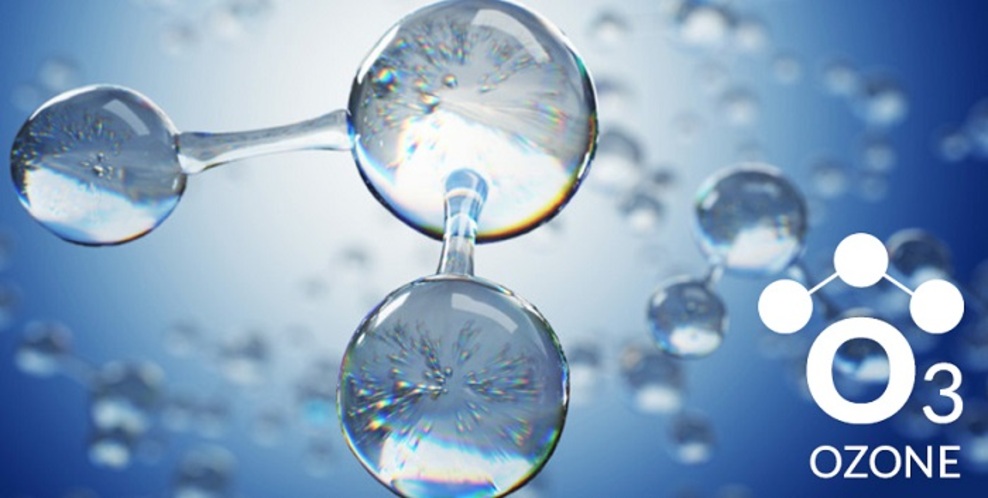
The Effect of Ozone on Flue Gases
Ozone is a gas formed by the combination of three oxygen atoms found in nature. Its high oxidation capacity has made it an important tool in controlling environmental pollutants and improving air quality. Flue gases are components in the air that contain harmful gases originating from industrial facilities, automobile exhausts, burning fossil fuels and various chemical processes. These gases pollute the environment, deteriorate air quality and have adverse effects on human health.
Due to its high oxidation power, ozone easily reacts with pollutants in the environment. As an oxidizer, ozone can oxidize polluting gases and convert them into less harmful compounds. This increases the usability of ozone in combating air pollution. The main pollutants found in flue gases include sulfur dioxide (SO₂), nitrogen oxides (NOx), carbon monoxide (CO) and various volatile organic compounds (VOCs). Ozone reacts with these components and renders them harmless. This helps improve air quality.
Sulfur Dioxide (SO₂) and Ozone Reaction
Sulfur dioxide is a gas formed during the combustion of fossil fuels and can cause acidic rain. The release of this gas into the air can cause great harm to the environment. Ozone oxidizes sulfur dioxide into sulfur trioxide (SO₃). Sulfur trioxide then reacts with water to form sulfuric acid (H₂SO₄). This reaction can render sulfur compounds in the atmosphere harmless rather than adding more acidic compounds to the atmosphere.
Chemical Reaction:
SO₂ + O₃ → SO₃ + O₂
Ozone reacts with sulfur dioxide to produce sulfur trioxide and oxygen, reducing the concentration of acidic components in the environment and reducing the effect of acidic rain.
Removal of Nitrogen Oxides (NOx)
Nitrogen oxides (NO and NO₂) are formed especially from traffic-related air pollution and industrial activities. Nitrogen oxides can cause the formation of acidic rain, ozone and fine particles. Ozone reacts with nitrogen monoxide (NO) to produce nitrogen dioxide (NO₂). This reaction reduces the concentration of nitrogen oxides in the air, which has a positive effect on air pollution.
Chemical Reaction:
NO + O₃ → NO₂ + O₂
The reaction of nitrogen oxides with ozone plays an important role in eliminating air pollution. Thanks to this reaction, the concentration of harmful nitrogen oxides in the air is significantly reduced.
Reaction of Carbon Monoxide (CO) and Ozone
Carbon monoxide is a highly toxic gas formed as a result of incomplete combustion of organic substances. Carbon monoxide can cause serious health problems when it enters the body through inhalation. Ozone enters into an oxidation reaction with carbon monoxide, turning it into carbon dioxide (CO₂). Carbon dioxide is a less harmful compound in the air and can be used by plants in photosynthesis by reacting with oxygen.
Chemical Reaction:
2CO + O₃ → 2CO₂ + O₂
This reaction allows carbon monoxide and ozone to combine and turn into carbon dioxide, reducing the harmful effects of CO in the air.
Oxidation of Volatile Organic Compounds (VOCs)
Volatile organic compounds (VOCs) are chemical compounds originating from industrial activities, petroleum-derived products, and automobile exhausts. These compounds are harmful gases that deteriorate air quality, cause odors, and can lead to health problems. Ozone forms oxidation reactions with VOCs. As a result of these reactions, VOCs are converted into less harmful compounds. This helps improve air quality.
5. The Place of Ozone in Air Cleaning Technologies
The effect of ozone on cleaning flue gases plays a major role in environmental engineering and industrial air cleaning systems. Ozone generators and ozone filters can be used to effectively remove pollutants from flue gases of industrial facilities. Ozone generators initiate the chemical reactions mentioned above by injecting ozone gas directly into the flue gas, while ozone filters provide direct mixing of gases with ozone, thus rendering the gases harmless. These methods are particularly effective in removing organic compounds, sulfur dioxides and nitrogen oxides.
6. Areas of Use of Ozone
The effects of ozone on flue gases are used in various industrial applications:
– Power Generation Facilities: Ozone is used in cleaning gases resulting from the combustion of fuels in power generation facilities.
– Chemical and Petrochemical Industry: In chemical production facilities, ozone offers an effective solution for removing harmful components.
– Waste Management: Ozone is used in waste processing plants to destroy organic compounds and pollutants.
– Kitchens and Restaurants: Ozone can be used to eliminate bad odors in kitchens and restaurants.
Thanks to its high oxidation power, ozone cleans flue gases is a very effective tool for. It improves air quality and reduces environmental damage by oxidizing harmful components such as sulfur dioxide, nitrogen oxides, carbon monoxide and VOCs. The effect of ozone on flue gases provides great benefits for both the environment and human health. For this reason, the use of ozone technologies is becoming widespread in air cleaning systems.
İlker KURAN
Alperen Mühendislik Ltd. Şti.







